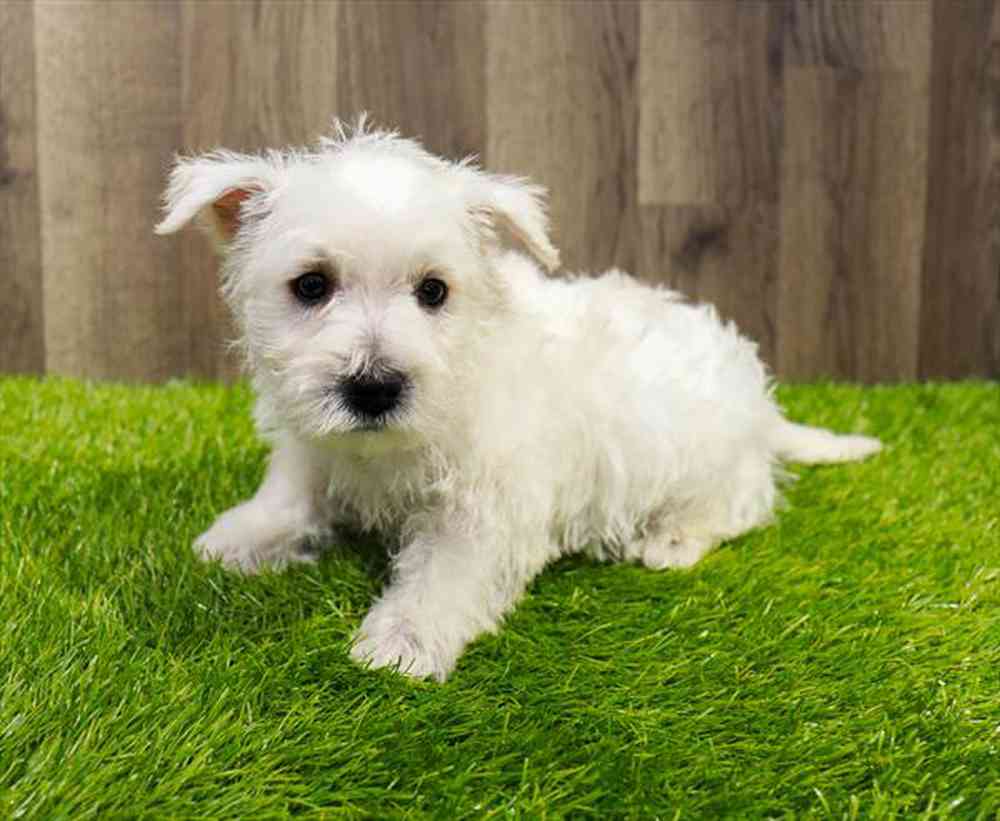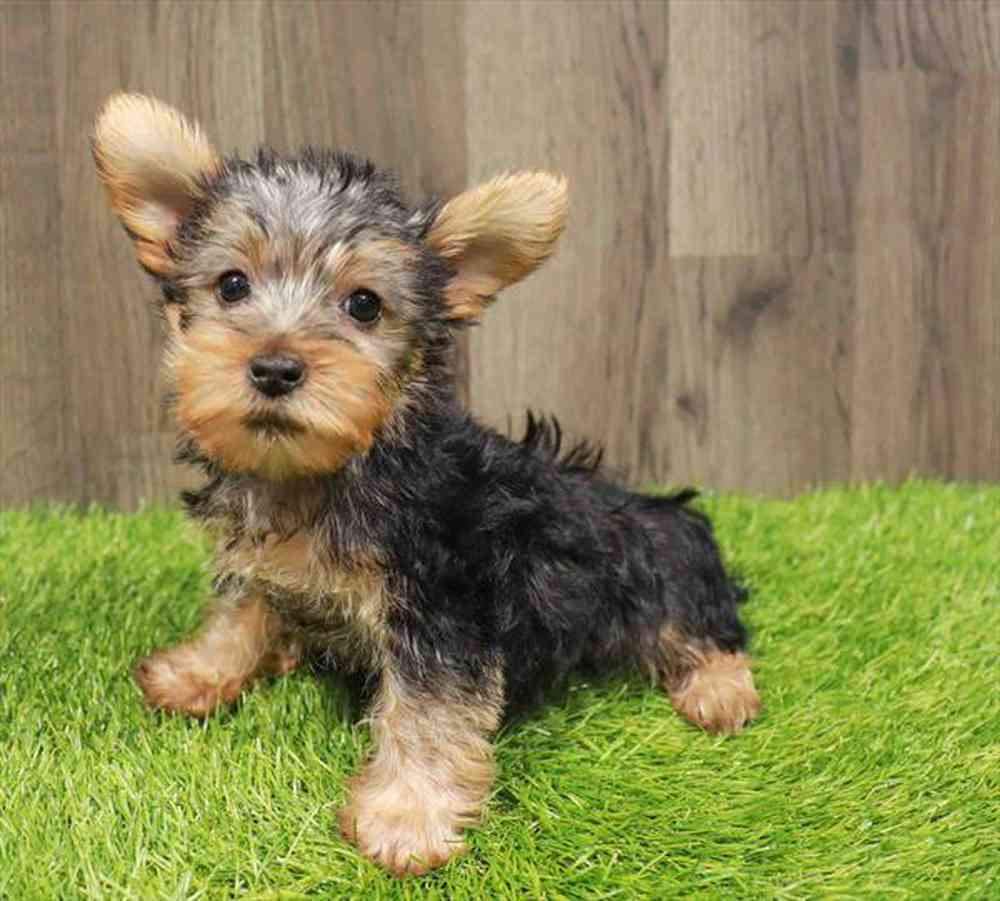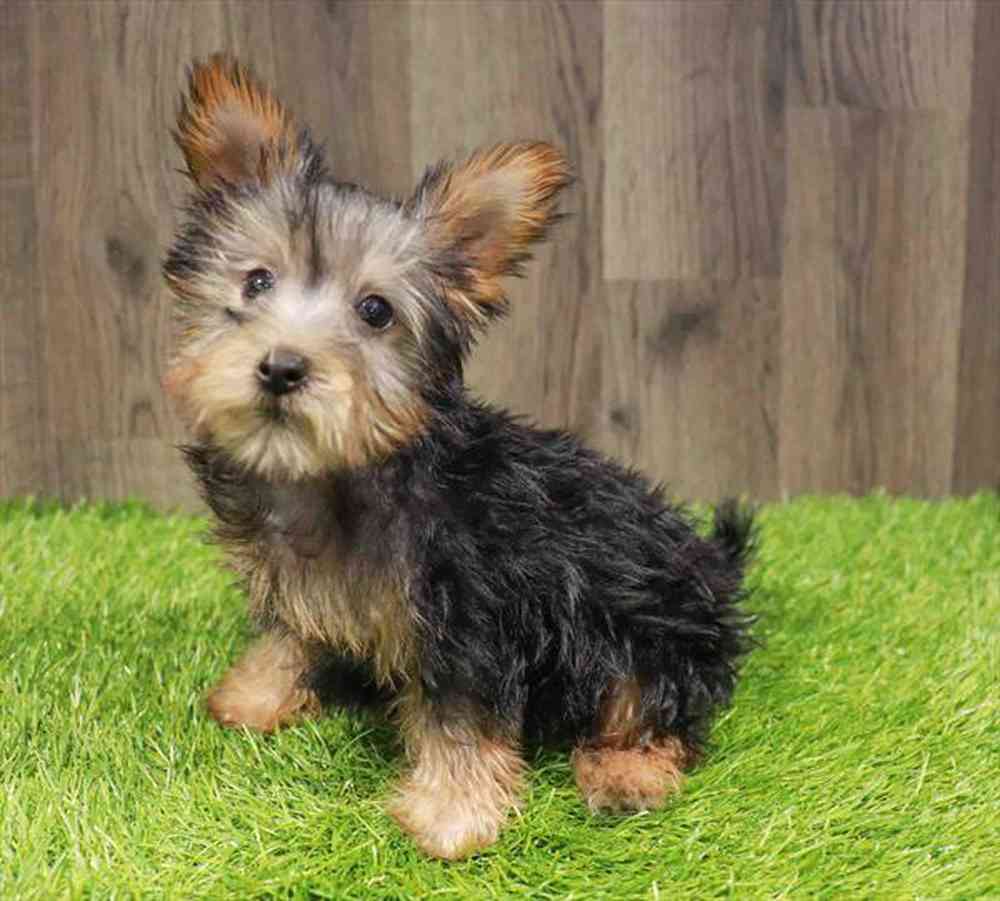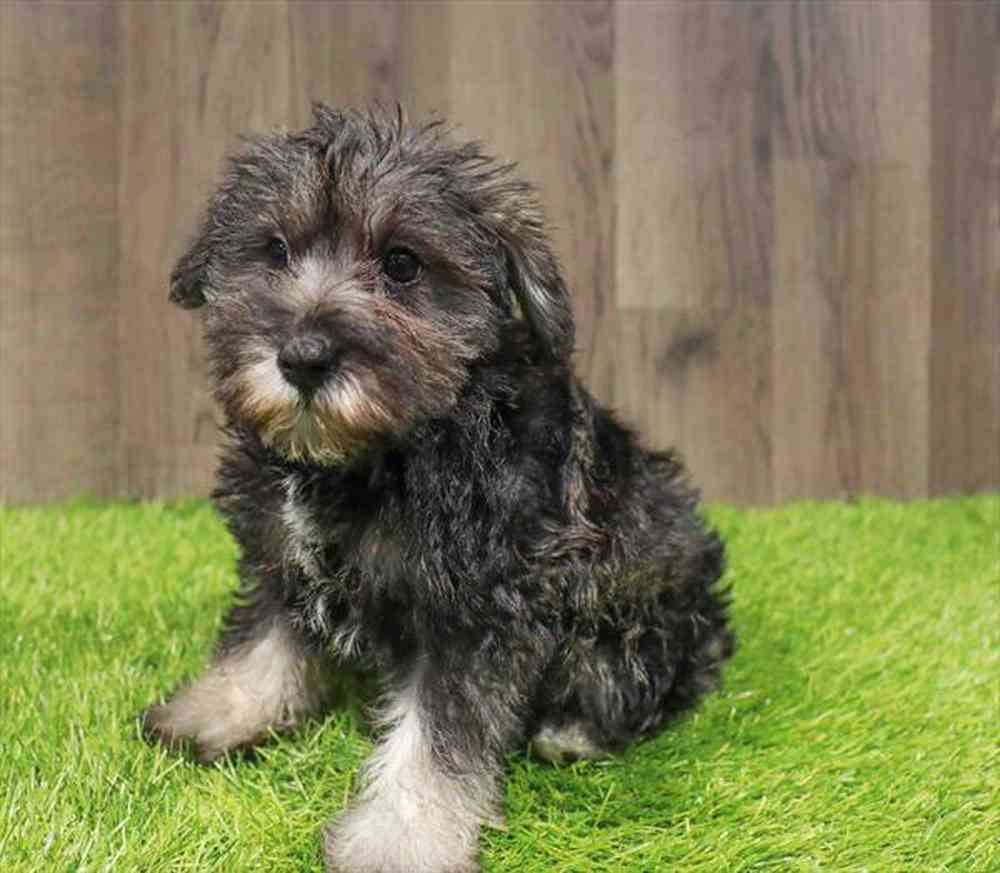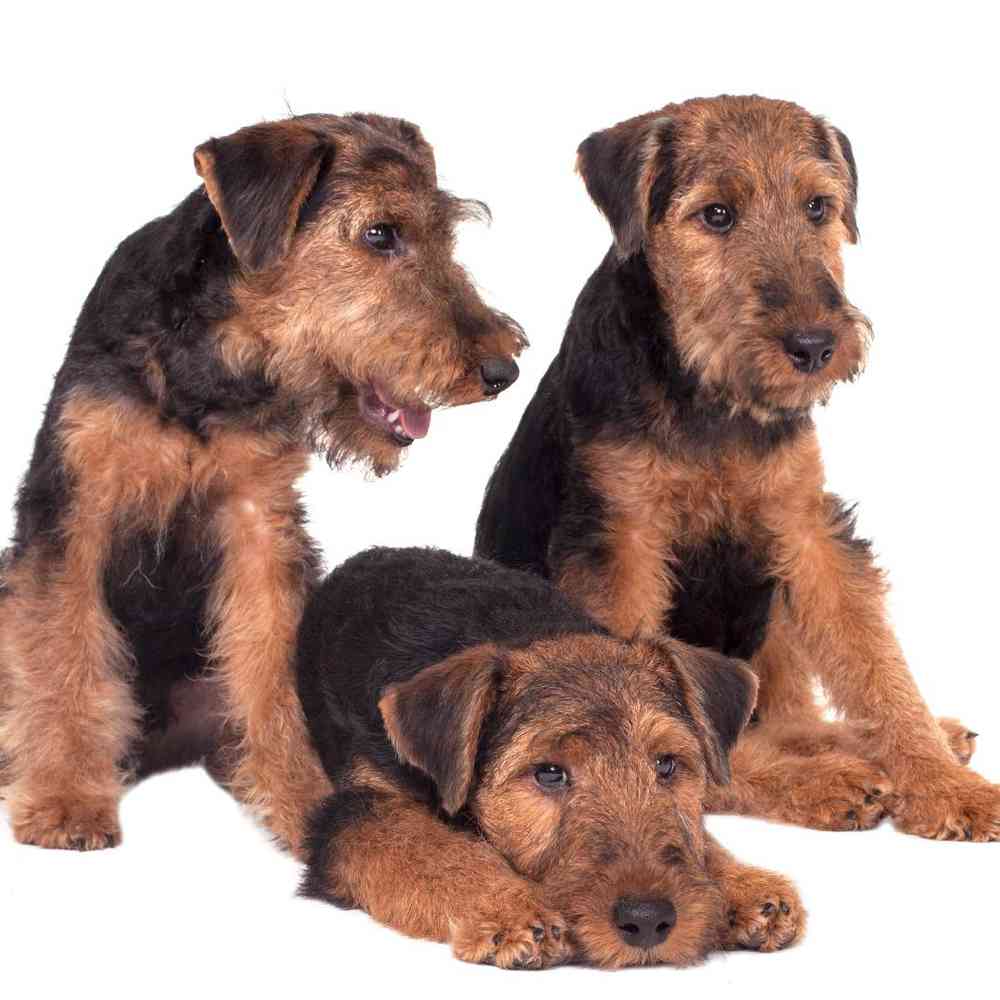
AKC Registrable
Welsh Terrier
The Welsh Terrier is as alert and spirited as any self-respecting terrier, but a bit calmer than most—“game, not quarrelsome,” as breed fanciers say. The Welshman was bred to do battle with badgers, otters, and other dangerous opponents.
Available Pups
All our Pets have found their homes. Please enter your contact information below so we can get in touch with you when we have found the perfect Pets for your family.
Puppy Knowledge
Breed Info
Clubs, Registries & Associations
American Canine Association Continental Kennel Club Universal Kennel Club International American Kennel Club United All Breed Registry America's Pet Registry, Inc. United Kennel Club (Based on breed recognition. See store for details on this particular puppy.)
Group
Terrier
Heritage
The Welsh Terrier, the oldest existing dog breed in the UK, originated in Wales. They were bred to flush badger, fox and otter from their dens for the hunters. Today we employ their skills for hunting, tracking, and agility.
Health Awareness
The Welsh Terrier has a life expectancy of 10-12 years and is prone eye disorders and skin disorders.
Personality
The Welsh Terrier needs an active family. This breed is a natural athelete, highly energetic, playful, vivacious, and wants to play with you for hours! They are the most calm of the terrier breeds, though, and a quick learner. You need to be a calm, knowledgeable, and humane owner giving consistent and committed leadership to your Welsh Terrier using only motivational training methods. They are bred to dig, so be ready to give your Welsh Terrier a digging pit and teach him or her to use it to keep your flower beds intact. This breed has high prey drive, likes to chase and roam, so a fence is necessary. This cheerful, busy and entertaining breed is a wonderful companion for you and your family.
Exercise/Energy Level
The Welsh Terrier is an energetic breed, and requires a daily walk and off-leash play and running in a safe, fenced area. They also need mental stimulation to prevent boredom and destruction, so be sure to provide your Welsh Terrier with plenty of interactive toys that challenge their problem-solving skills. A bored Welsh Terrier can develop anxiety and stress issues.
Additional Information
Grooming Requirements: Requires regular brushing and professional grooming for plucking and stripping Coat: Short Shedding: Little to no shedding Hypoallergenic: Yes Apartment Living: Good for apartment living if given sufficient exercise Lap Dog: Yes Good With Children: Best with older children who understand how to respect this terrier breed. They do not tolerate rough housing. This breed needs a lot of socialization when a puppy. Good With Other Pets: Good with other dogs when socialized while a puppy; can be dog aggressive; not trustworthy with non-canine pets due to hunting instinct.
Breed Standard
General Appearance
The Welsh Terrier is a sturdy, compact, rugged dog of medium size with a coarse wire-textured coat. The legs, underbody and head are tan; the jacket black (or occasionally grizzle). The tail is docked to length meant to complete the image of a "square dog" approximately as high as he is long. The movement is a terrier trot typical of the long-legged terrier. It is effortless, with good reach and drive. The Welsh Terrier is friendly, outgoing to people and other dogs, showing spirit and courage. The "Welsh Terrier expression" comes from the set, color, and position of the eyes combined with the use of the ears.
Size, Proportion, Substance
Males are about 15 inches at the withers, with an acceptable range between 15 and 15½. Bitches may be proportionally smaller. Twenty pounds is considered an average weight, varying a few pounds depending on the height of the dog and the density of bone. Both dog and bitch appear solid and of good substance.
Head
The entire head is rectangular. The eyes are small, dark brown and almond-shaped, well set in the skull. They are placed fairly far apart. The size, shape, color and position of the eyes give the steady, confident but alert expression that is typical of the Welsh Terrier. The ears are V-shaped, small, but not too thin. The fold is just above the topline of the skull. The ears are carried forward close to the cheek with the tips falling to, or toward, the outside corners of the eyes when the dog is at rest. The ears move slightly up and forward when at attention. Skull--The foreface is strong with powerful, punishing jaws. It is only slightly narrower than the backskull. There is a slight stop. The backskull is of equal length to the foreface. They are on parallel planes in profile. The backskull is smooth and flat (not domed) between the ears. There are no wrinkles between the ears. The cheeks are flat and clean (not bulging). The muzzle is one-half the length of the entire head from tip of nose to occiput. The foreface in front of the eyes is well made up. The furnishings on the foreface are trimmed to complete without exaggeration the total rectangular outline. The muzzle is strong and squared off, never snipy. The nose is black and squared off. The lips are black and tight. A scissors bite is preferred, but a level bite is acceptable. Either one has complete dentition. The teeth are large and strong, set in powerful, vise-like jaws.
Neck, Topline, Body
The neck is of moderate length and thickness, slightly arched and sloping gracefully into the shoulders. The throat is clean with no excess of skin. The topline is level. The body shows good substance and is well ribbed up. There is good depth of brisket and moderate width of chest. The loin is strong and moderately short. The tail is docked to a length approximately level (on an imaginary line) with the occiput, to complete the square image of the whole dog. The root of the tail is set well up on the back. It is carried upright.
Hindquarters
The hindquarters are strong and muscular with well-developed second thighs and the stifles well bent. The hocks are moderately straight, parallel and short from joint to ground. The feet should be the same as in the forequarters.
Coat
The coat is hard, wiry, and dense with a close-fitting thick jacket. There is a short, soft undercoat. Furnishings on muzzle, legs, and quarters are dense and wiry.
Color
The jacket is black, spreading up onto the neck, down onto the tail and into the upper thighs. The legs, quarters, and head are clear tan. The tan is a deep reddish color, with slightly lighter shades acceptable. A grizzle jacket is also acceptable.
Gait
The movement is straight, free and effortless, with good reach in front, strong drive behind, with feet naturally tending to converge toward a median line of travel as speed increases.
Temperament
Friendly, Spirited, Intelligent
Faults
Any deviation from the foregoing should be considered a fault; the seriousness of the fault depending upon the extent of the deviation.
Overview
About
Sturdy, compact, and rugged, with a tight-fitting black-and-tan coat and a rectangular head featuring folded ears and a jaunty beard, Welsh are constructed along the classic lines of Britain’s long-legged terriers. They stand about 15 inches at the shoulder, a little larger than the but much smaller than the mighty . All three breeds, however, share a family resemblance: An ancient breed called the Old English Black and Tan Terrier is thought to be the granddaddy of these and some other British terriers.
History
It’s impossible to say when Welsh Terriers came into being, but the breed as we know it was taking shape sometime in the 1700s. They were bred to hunt fox, otter, and badger in the remote mountainous region of northern Wales. Badgers, especially, are dangerous adversaries, and digging them out of their lairs was no job for sissy dogs. Welsh Terriers, with their powerful forequarters and punishing jaws, along with typical terrier courage, were equipped for the task of going head to head with sharp-toothed, razor-clawed prey.
Standard
The Welsh Terrier is a sturdy, compact, rugged dog of medium size with a coarse wire-textured coat. The legs, underbody and head are tan; the jacket black (or occasionally grizzle). The tail is docked to length meant to complete the image of a “square dog” approximately as high as he is long. The movement is a terrier trot typical of the long-legged terrier. It is effortless, with good reach and drive. The Welsh Terrier is friendly, outgoing to people and other dogs, showing spirit and courage. The “Welsh Terrier expression” comes from the set, color, and position of the eyes combined with the use of the ears.
Nutrition
The Welsh Terrier should do well on a high-quality dog food, whether commercially manufactured or home-prepared with your veterinarian’s supervision and approval. Any diet should be appropriate to the dog’s age (puppy, adult, or senior). Some dogs are prone to getting overweight, so watch your dog’s calorie consumption and weight level. Treats can be an important aid in training, but giving too many can cause obesity. Learn about which human foods are safe for dogs, and which are not. Check with your vet if you have any concerns about your dog’s weight or diet. Clean, fresh water should be available at all times.
Grooming
Care of the Welsh Terrier’s coat is similar to that for other broken-coated terriers. The hair can be plucked by hand, commonly referred to as hand-stripping. This type of grooming is a continual process and an art that takes years to master. Pet grooming for a Welsh Terrier is not complicated. The dog should be clipped every 8 to 12 weeks, leaving the coat longer in cold weather. The nails should be trimmed at least weekly, and the dog brushed once or twice a week. Usually bathing between clippings is not necessary, but if it is, use a good shampoo that contains moisturizers.
Exercise
Welsh Terriers are high-energy dogs. They enjoy getting exercise by doing activities with their owner such as playing ball or catching a flying disc in a fenced yard. They should have lots of running time in an enclosed area, as well as a long walk every day or so. Once the dog is an adult, and only if he is in good health, let him run and play until really tired out, but not exhausted.
Training
Welsh Terriers are friendly and outgoing, but puppies need to be adequately socialized by their owners to encourage polite behavior around other dogs. All Welsh should be taught to be under control and tolerant of other dogs when walking on lead. Lots of exercise and attention help this energetic dog become the affectionate, well-behaved companion he was born to be.
Health
Welsh puppies are generally hardy, thrive with regular care, and don’t seem to be as fragile as many other puppies. Welsh who reach 15 to 18 years of age are not uncommon, but the average lifespan seems to be 12 to 14. Responsible breeders screen their stock for health conditions such as allergy problems, hip dysplasia and Legge-Calve-Perthes disease.
Trivia
Did you know?
Caroline Kennedy had a Welsh Terrier named Charlie


